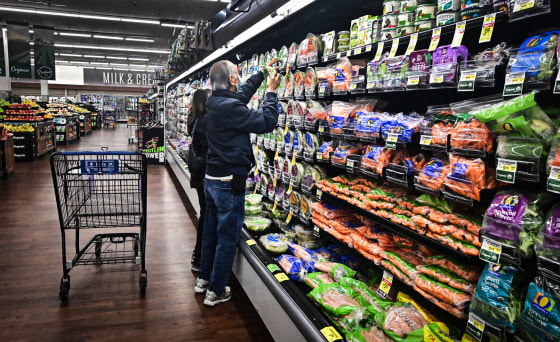High inflation is subsiding, but many Americans have yet to see relief from elevated prices at the grocery store.
“Grocery prices skyrocketed during the pandemic, and in many cases, they’ve kept going up, even though the pandemic is over,” Sen. Elizabeth Warren, D-Mass., said at a Wednesday Senate hearing.
Shoppers may be infuriated to find certain grocery products, such as a pound of chicken breasts or a loaf of bread, go up from one week to the next, Warren said.
And they may be frustrated to find other products, such as a box of cereal or a package of spaghetti, come with fewer servings for the same price, she said. That trend is known as shrinkflation.
Lawmakers are divided on what has prompted those elevated prices.
“Grocery prices are up because of good old-fashioned corporate price gouging,” Warren said. “And they can gouge consumers on prices because there’s only a small number of companies controlling every level of the food chain.”
Sen. John Kennedy, R-La., blamed government spending under President Joe Biden.
“When you spend this kind of money, you’re going to have inflation,” Kennedy said.
A recent Harris poll found that almost 3 in 5 Americans think the country is in an economic recession — even though it is not — with inflation a top concern.
“Inflation is coming down, but prices remain elevated,” said Mark Hamrick, senior economic analyst at Bankrate. “As long as prices are elevated, that means that affordability challenges persist.”
Where consumers may see signs of relief
One measure of inflation, the consumer price index, shows the food index was flat in April compared to the prior month.
Yet over the past 12 months, food was up 2.2%.
Certain categories, such as apples and eggs, have declined over the past year. Other items, such as juices and drinks and beef roasts, are up.
“I’m seeing a little bit of a light at the end of the tunnel, where it seems like the prices for some items are decreasing or flattening,” said Trae Bodge, a smart shopping expert at TrueTrae.com.
Still, for some households, the long-term higher food prices may be leading to financial stress. New research from the Urban Institute shows Americans may be saddled with debt after turning to credit cards, buy now pay later programs and payday loans to pay for groceries.
Food insufficiency — where households sometimes or often do not have enough to eat — is more prevalent for families with less than $50,000 in income and Black, Hispanic, disabled and younger adults, as well as parents living with children under 18, a recent Federal Reserve well-being survey found.
Some brands are stepping up their efforts to make food more affordable.
This week, Target announced plans to lower prices on about 5,000 items, including bread, fruit, vegetables, milk and meat.
